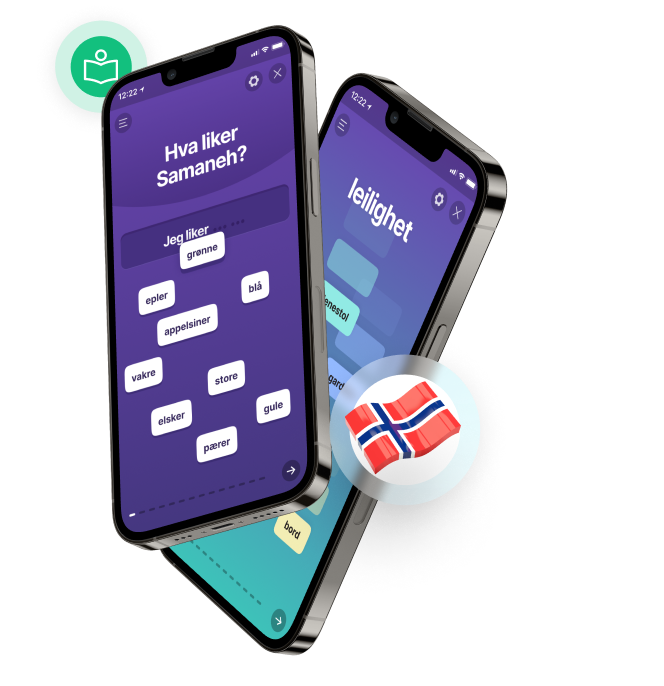Tor rydder på verkstedet sitt
Analysing Norwegian Grammar Part 2
Tor is back in the woodshop this week. He is sorting words onto shelves and boxes. Which words go where? Read on and you might be able to help Tor with analysing Norwegian Grammar.

What is grammatical analysis ?
— Boring.
Erm… well, maybe, but that wasn’t quite the answer I had in mind — let’s try that again...
— What IS grammatical analysis ?
— Absolutely incomprehensible - - -
— No, really - what do we mean when we say we analyse Norwegian grammar?
— Yeah, and why on Earth do we even bother with it?..
We examine a sentence to find out more about how it was put together.
There are two levels of analysis, each of them very useful to understand
Prelude
Before we start: take a moment to review Analysing Norwegian Grammar Part 1
Word classes (ordklasse) are the “raw materials” or the "word inventory" of our language.
We can classify every word in a language according to its specific meaning(s) and content. But a word’s true potential is only realized when it is applied in a sentence. A word doesn’t really have a function until we put it to use. At that point we forget all about word classes, and use the term clause (setningsledd). A clause (setningsledd) can consist of one or several words.
— Hang on, hang on, hang on!!!
This sounds REALLY complex. Why do I even need to bother with this stuff? I just want to learn Norwegian, get me out of here !
— Wait!
— I get it.
The main reason why I ask you to stay on this page is because understanding this stuff will REALLY help you! I mean — REALLY.
If you are learning Norwegian right now, then consider this:
If you get the difference between what Tor puts on his shelves and what he is packing into boxes to ship to “Sentence land”, you will have the key to understanding how language works.
Understand it once, and you won’t have to keep thinking about it. You will automatically have a deeper understanding. Plus it will be much easier to learn and remember new words and grammatical concepts.
Now, have you ever asked yourself any of the following questions?
— Why is the same word sometimes called a substantiv and sometimes a subjekt?
— Can a pronomen also be a subjekt?
— What is the difference between a subjekt and an objekt ?
— Why does my Norwegian teacher say verb and verbal about the same darn word?
This is what I’m talking about — the answer is coming up right now:
Just remember:
raw materials vs function
Let’s go and say "Takk for sist" to Tor...
Tor rydder på verkstedet sitt.
We will now analyse that sentence — twice. First, we go in at word class level and look at the “raw materials”. They go on the shelves.
Then we break the same sentence into parts that fit into the boxes on the table — a bit like IKEA, ready for assembly. That’s clause level analysis. Notice the difference.
Word class (Norwegian) Word Class (English) Tor substantiv (egennavn) proper noun rydder verb verb på preposisjon prepositon verkstedet substantiv (fellesnavn) common noun sitt eiendomspronomen possessive pronoun
So, basically we just picked the sentence apart and categorized each word. That’s word class analysis.
But what are the words DOING in the sentence?
Setningsdel (Norwegian) Clause (English) Tor subjekt subject rydder verbal verb på verkstedet objekt object sitt
Note that på, verkstedet and sitt — three words from completely different word classes — join together to form that “target” of the action — the object.
Finally, a question for you:
Is the clause “på verkstedet sitt” direct or indirect object?
If you think you know, write the answer in the commentary box below.
That’s all folks!
Would you like to learn more Norwegian?
Sign up today and learn Norwegian with our game-based online language course «Samanehs reise», from beginner level to fluent speaker!
From NOK 375 per måned



